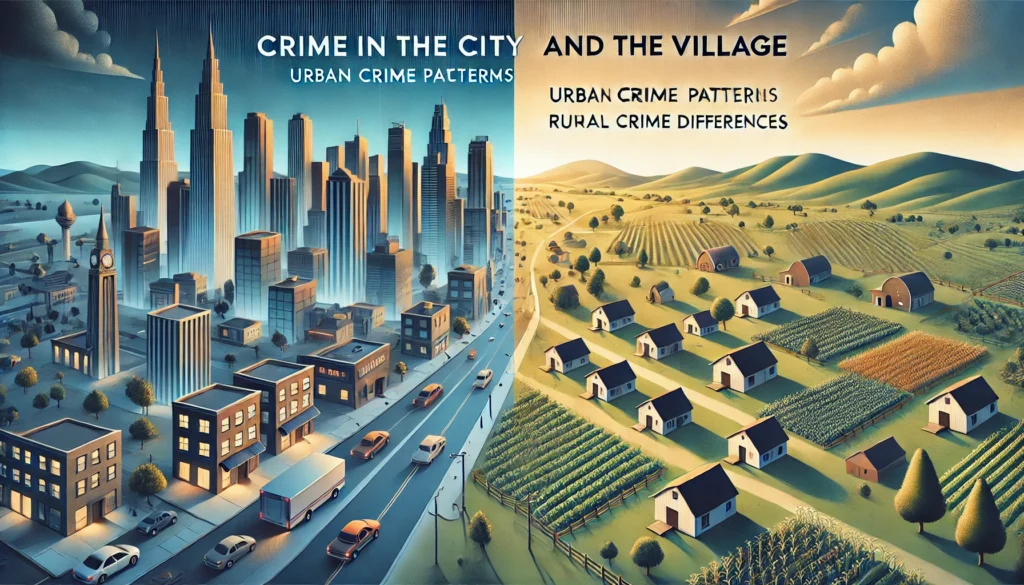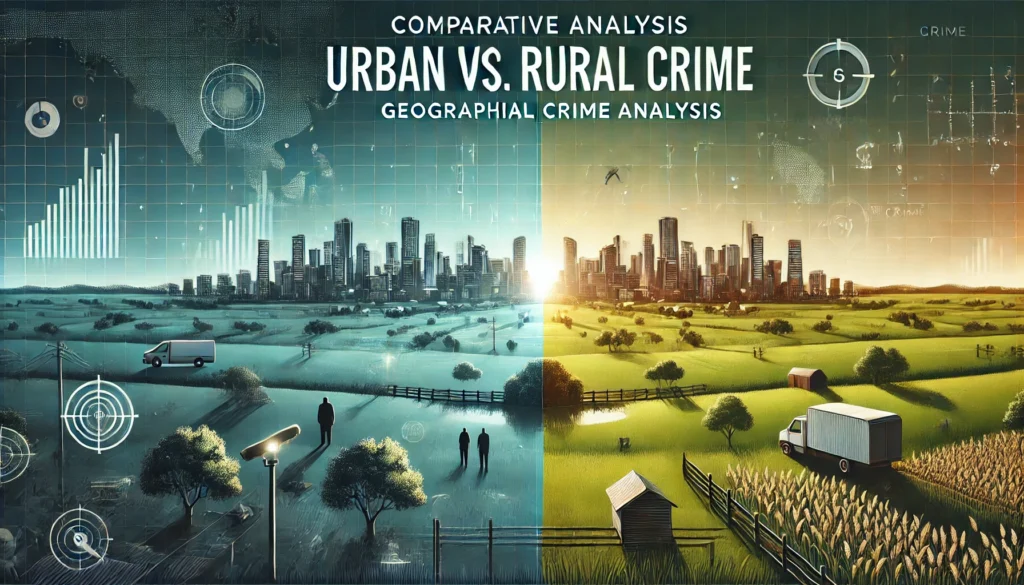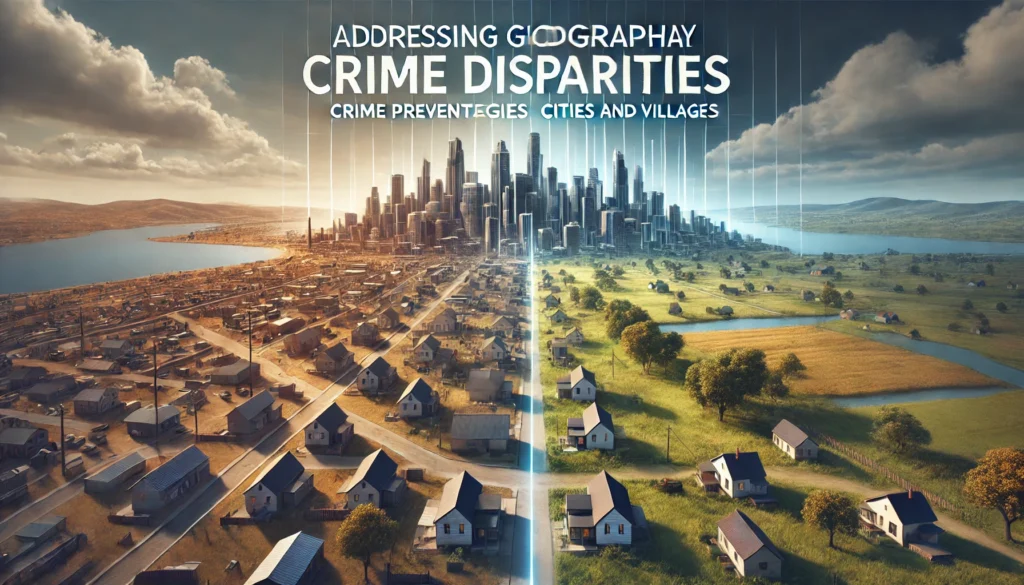Criminology, the scientific study of crime and criminal behavior, encompasses various theories and perspectives, including criminology theories, natural crime factors, and geographical influences on crime, to understand the causes of crime. Among these, natural factors, particularly geographical factors, play a pivotal role in shaping crime trends and patterns. This article explores the influence of geographical factors on crime, comparing criminal behavior in cities and villages, and examining how these environments contribute to the prevalence and types of crimes.
I. The Geographical Factor in Criminology
Geographical factors have long been recognized as influential in criminology. They refer to the physical and environmental characteristics of a location, such as climate, terrain, urbanization, and population density, which may affect human behavior and, by extension, criminal activities. These factors are critical in shaping not only where crimes occur but also the types of crimes most prevalent in different areas.
1. Climate and Crime
Climate is one of the most significant natural factors influencing crime. Research suggests that warmer climates are often associated with higher rates of certain types of crimes, particularly violent crimes. This correlation is attributed to the psychological and physiological effects of heat on human behavior, such as increased irritability and aggression. For instance, crimes like assault and robbery are more frequent in tropical regions compared to colder areas. Including keywords like ‘climate impact on crime’ and ‘weather-related criminal behavior‘ provides an opportunity to further explore these connections.
Conversely, colder climates may see a rise in property crimes, as individuals may engage in theft or burglary to survive harsh conditions. Seasonal variations also influence crime rates, with summer months typically witnessing an uptick in criminal activities. Climate is one of the most significant natural factors influencing crime. Research suggests that warmer climates are often associated with higher rates of certain types of crimes, particularly violent crimes. This correlation is attributed to the psychological and physiological effects of heat on human behavior, such as increased irritability and aggression. For instance, crimes like assault and robbery are more frequent in tropical regions compared to colder areas.
Conversely, colder climates may see a rise in property crimes, as individuals may engage in theft or burglary to survive harsh conditions. Seasonal variations also influence crime rates, with summer months typically witnessing an uptick in criminal activities.
2. Terrain and Accessibility
The physical layout of a region, including its terrain and accessibility, also impacts crime. Areas with dense forests, mountainous regions, or isolated locations often provide hiding spots for criminal activities or hinder law enforcement efforts. Conversely, highly accessible urban areas may facilitate crimes such as theft and vandalism due to the ease of escape and the abundance of potential targets.
3. Urbanization and Population Density
Urbanization and population density significantly contribute to the geographical dynamics of crime. Crowded urban areas provide anonymity, which can encourage criminal behavior. Additionally, urban regions often exhibit stark socioeconomic disparities, leading to frustration and resentment that may manifest as criminal activities. High population density also increases the chances of interpersonal conflicts, which can escalate into violent crimes.

II. Crime in the City and the Village: Urban Crime Patterns and Rural Crime Differences
The geographical divide between urban and rural areas creates distinct patterns of crime. While cities and villages both experience crime, the types, causes, and frequency often differ substantially due to the unique characteristics of these environments.
1. Urban Crime: The City as a Hotspot
Cities are often associated with higher crime rates compared to rural areas. Several factors contribute to this phenomenon, including population density, economic inequality, and social disorganization.
- Types of Urban Crime:
- Violent Crimes: Assault, homicide, and gang-related violence are more prevalent in cities due to social tensions and the presence of organized criminal groups.
- Property Crimes: Theft, burglary, and vandalism are common in urban areas, driven by the abundance of potential targets and economic disparities.
- Cybercrime: With the proliferation of technology in cities, cybercrimes such as identity theft and hacking are on the rise.
- Causes of Urban Crime:
- Economic Inequality: Cities often have significant income disparities, which can lead to frustration and criminal behavior.
- Social Disorganization: The breakdown of community ties and social control mechanisms in urban areas contributes to criminal activity.
- Anonymity: The large, diverse population in cities provides a level of anonymity that can embolden individuals to commit crimes.
2. Rural Crime: Patterns in the Village
Rural areas, while generally experiencing lower crime rates, are not immune to criminal activities. The nature and causes of rural crimes differ from those in urban settings.
- Types of Rural Crime:
- Property Crimes: Theft of agricultural equipment, livestock, and other rural assets.
- Domestic Violence: Due to the close-knit nature of rural communities, domestic violence often goes underreported but remains a significant issue.
- Environmental Crimes: Illegal logging, poaching, and other crimes related to natural resources are more prevalent in rural areas.
- Causes of Rural Crime:
- Economic Struggles: Limited economic opportunities in rural areas may lead individuals to engage in theft or other crimes for survival.
- Isolation: The physical isolation of rural areas makes them vulnerable to certain crimes, as law enforcement may take longer to respond.
- Traditional Norms: In some cases, traditional norms and values in rural communities may tolerate or even perpetuate certain criminal behaviors, such as vendettas or honor-based crimes.

III. Comparative Analysis: Urban vs. Rural Crime: Geographical Crime Analysis
When comparing crime in cities and villages, several key differences and similarities emerge:
- Frequency of Crime: Urban areas generally have higher crime rates due to their larger populations, economic disparities, and social anonymity. Rural areas experience lower crime rates but may have unique challenges such as underreporting and lack of resources.
- Nature of Crime: Cities are hotspots for violent and property crimes, while villages see more localized and resource-based crimes. Urban crimes are often influenced by external factors like technology and globalization, whereas rural crimes are tied to local economic and social conditions.
- Law Enforcement: Urban areas typically have more extensive law enforcement resources, including specialized units and advanced technology. However, the sheer volume of crimes can overwhelm these resources. In rural areas, limited law enforcement presence and slower response times can create opportunities for criminal activities.

IV. Addressing Geographical Crime Disparities: Crime Prevention Strategies for Cities and Villages
Understanding the geographical factors influencing crime is crucial for developing effective prevention and intervention strategies. Policymakers and law enforcement agencies must consider the unique challenges posed by urban and rural environments to design tailored solutions.
1. Urban Strategies
- Enhancing community policing to rebuild trust and social cohesion.
- Addressing economic inequalities through targeted social programs.
- Implementing advanced surveillance and technological tools to combat cybercrime.
2. Rural Strategies
- Increasing law enforcement presence and improving response times.
- Providing economic support to reduce poverty-driven crimes.
- Educating communities about domestic violence and other hidden crimes to encourage reporting and intervention.
Conclusion
The geographical factor is a fundamental aspect of criminology, shaping crime patterns in both cities and villages. While urban areas face challenges such as high crime rates and social disorganization, rural areas contend with unique issues like isolation and underreporting. By examining the natural and environmental influences on crime, we can better understand the complex interplay between geography and criminal behavior. This understanding is essential for creating effective strategies to prevent crime and promote safer communities in diverse settings.

